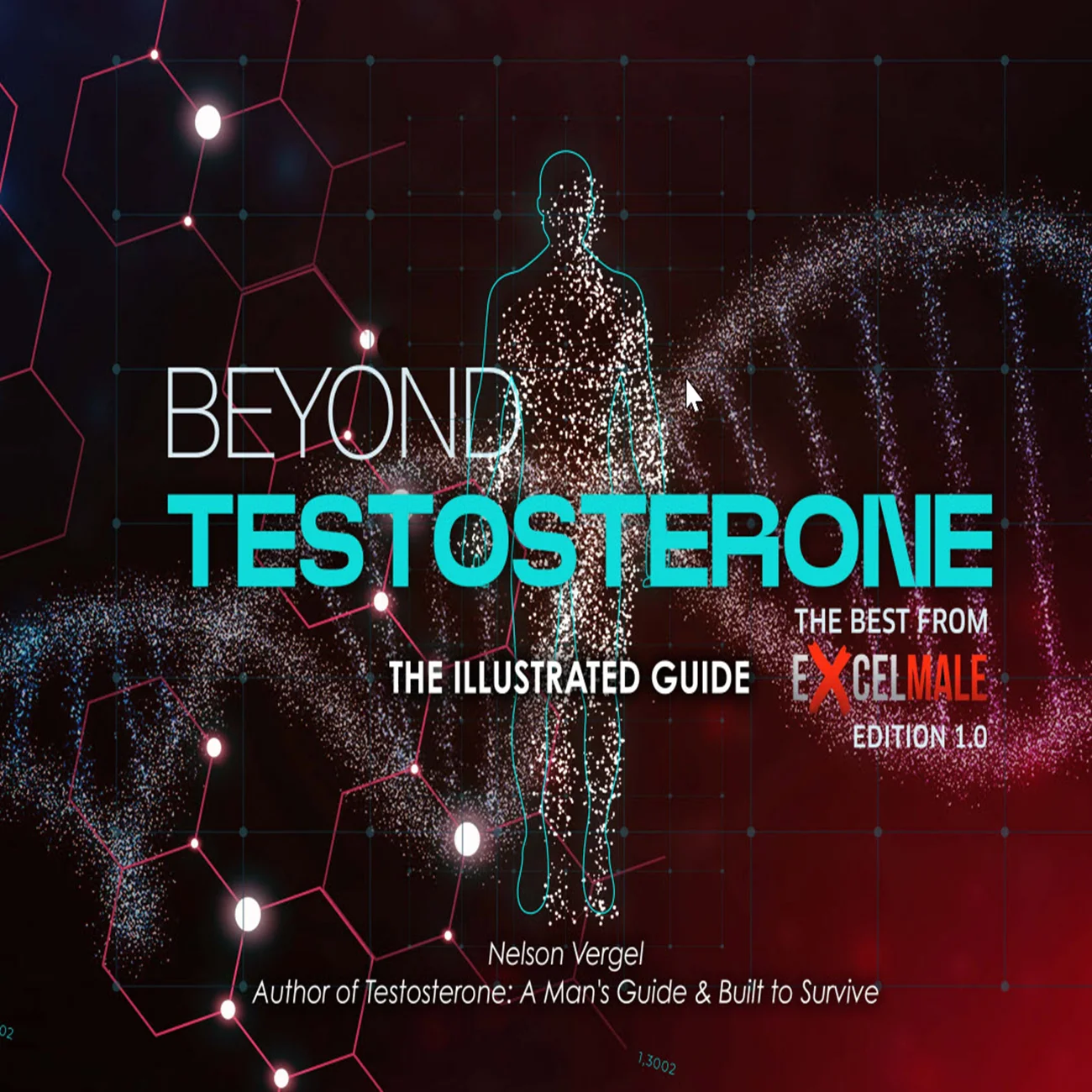You should upgrade or use an alternative browser.
Where do you feel the best with E2 levels
- Thread starter Zooka15
- Start date
PAUL-E
Member
I agree, I will participate as soon as I get my estrogen sensitive results back. Maybe a lot of people are using the standard estrogen test and not the sensitiveZooka, I don't know why no one is participating, but I do think it's a good Poll to have.
"sorry I just voted I'm the 9th person"
Nelson Vergel
Founder, ExcelMale.com
http://www.anabolic.org/the-significance-of-the-estrogenic-environment-to-bodybuilding/
http://www.ironmagazine.com/2015/muscle-growth-and-the-estrogen-connection/
Palermitano
Guest
No one should be messing with E2 unless you have gyno.
Ive been running with an E2 of 60+, no side affects and feel pretty good. My prostate however has been recently enlarged (PSA solid at 0.6) taking herbal supplements now. Doesn't high E2 have this negative affect on prostate?
Nelson Vergel
Founder, ExcelMale.com
Read more at: https://www.excelmale.com/forum/sho...ncreases-Testosterone-and-Decreases-Estradiol
Nelson Vergel
Founder, ExcelMale.com
Estrogens and Male Lower Urinary Tract Dysfunction
Abstract
Benign prostatic hyperplasia (BPH) and associated lower urinary tract symptoms (LUTS) are common clinical problems in urology and affect the majority of men at some time during their lives. The development of BPH/LUTS is associated with an increased ratio of estrogen to androgen levels, and this ratio, when mimicked in a variety of animals, induces BPH and lower urinary tract dysfunction (LUTD). While the precise molecular etiology remains unclear, estro- gens have been implicated in the development and mainte- nance of BPH. Numerous endogenous and exogenous estro- gens exist in humans. These estrogens act via multiple estro- gen receptors to promote or inhibit prostatic hyperplasia and other BPH-associated processes. The prostate is an estrogen target tissue, and estrogens directly and indirectly affect growth and differentiation of prostate. The precise role of estrogen action directly affecting prostate growth and differentiation in the context of BPH is an understudied area and remains to be elucidated. Estrogens and selective estrogen receptor modulators (SERMs) have been shown to promote or inhibit prostate proliferation illustrating their potential roles in the development of BPH as therapy. More work will be required to identify estrogen signaling pathways associated with LUTD in order to develop more efficacious drugs for BPH treatment and prevention.
Keywords Benign prostatic hyperplasia . Selective estrogen receptor modulators . Lower urinary tract dysfunction . Treatment
* William A. Ricke
1 Molecular and Environmental Toxicology Center, University of
Wisconsin, Madison, WI, USA
2 Department of Urology, University of Wisconsin, 1111 Highland
Ave, 7107 WIMR, Madison, WI, USA
3 Medical Scientist Training Program and Department of Pathology and Laboratory Medicine, University of Rochester School of Medicine & Dentistry, Rochester, NY, USA
4 Department of Pharmacology and Chemical Biology, University of
Pittsburgh School of Medicine, Pittsburgh, PA, USA
5 George M. O'Brien Benign Urology Research Center, University of
Wisconsin, Madison, WI, USA
Jackie Treehorn
Member
Ive been running with an E2 of 60+, no side affects and feel pretty good. My prostate however has been recently enlarged (PSA solid at 0.6) taking herbal supplements now. Doesn't high E2 have this negative affect on prostate?
Very interesting. My latest labs showed a sensitive E2 level of 68 (total test was 1131, TE ratio: 16.6), and I don't have any high E2 symptoms...no itchy/sore nipples, no water retention/bloating, nothing at all. My PSA level was exactly the same as my pre-TRT level (1.1). I haven't had any prostate issues since I started TRT. I'm on the daily Cialis (5mg), as well.
I had my follow up consult with Dr. Crisler today, and he said that he treats ME, not a number on a lab test. Since I was absent any symptoms, he didn't think I needed Anastrozole, and that's fine with me. I volunteered to try EOD test injections (vice every 3.5 days that I'm on now) to see if that will naturally bring down that E2 level, and he agreed that I could try that if I liked. I'll retest basic labs in about 6 weeks to see where I stand. I also want to see if I feel better on the EOD protocol. Ah...I just love being a guinea pig!
CoastWatcher
Moderator
Very interesting. My latest labs showed a sensitive E2 level of 68 (total test was 1131, TE ratio: 16.6), and I don't have any high E2 symptoms...no itchy/sore nipples, no water retention/bloating, nothing at all. My PSA level was exactly the same as my pre-TRT level (1.1). I haven't had any prostate issues since I started TRT. I'm on the daily Cialis (5mg), as well.
I had my follow up consult with Dr. Crisler today, and he said that he treats ME, not a number on a lab test. Since I was absent any symptoms, he didn't think I needed Anastrozole, and that's fine with me. I volunteered to try EOD test injections (vice every 3.5 days that I'm on now) to see if that will naturally bring down that E2 level, and he agreed that I could try that if I liked. I'll retest basic labs in about 6 weeks to see where I stand. I also want to see if I feel better on the EOD protocol. Ah...I just love being a guinea pig!
I know you hoped to avoid an AI - congratulations. I would be very surprised if EOD-injections didn't lower your estradiol. Let us know how things play out.
CoastWatcher
Moderator
It seems to be it is coming down to more of a ratio of T/E, which many have pointed out here before. Hopefully this thread will help new members or new to TRT not to get so focused on a E2 number. I know a lot of other sites state you need E2 closest to 20 or need a T/E ratio 50:1 and so on. I think this gets most people confused or hooked up on a number. I know myself have change my attitude on E2, this site is filled with tons of info and real experiences.
Ranges and ratios are metrics that a good doctor can use to help a patient manage his health, not manage a lab value. All of it is secondary to the question of how one feels. You're right -too many chase the perfect quantitative answer.
Jackie Treehorn
Member
Tried Cialis, too many negative sides for me, Im disappointed. I may ask for a very low dose of anastrozole on my upcoming consult with Defy, just to see how I would feel. Any real reason not to try it? Any long term concerns?
The reason not to try it is that you don't have any high E2 symptoms. Anastrozole is a very powerful drug originally used to treat breast cancer for women. It really lowers your E2 quickly, and if you're not careful and aren't dosing it properly, you can tank your E2 very fast. If you tank your E2, you will feel like crap, and your libido will be gone. Recovery from having your E2 tanked takes time. I've read a bunch of threads here from guys that tanked, and it took them months for their E2 to bounce back to normal levels, and feel decent again.
Per the Cialis...maybe you should try Levitra (Vardenafil). Some others here are using it (Nelson, I think?), and they say the sides are a lot less harsh. I may go that way myself, because the Cialis sinus side effects are bugging me. Other than that, it has been a great drug for me.
Jackie Treehorn
Member
I know you hoped to avoid an AI - congratulations. I would be very surprised if EOD-injections didn't lower your estradiol. Let us know how things play out.
I'll give EOD test injections a shot (haha, no pun intended). Since I'm still dialing in my protocol, I really don't have anything to lose, and it can give me even more stable levels with less aromatization. My test dosage will be the same only broken down now into 40mg EOD, vice 70mg every 3.5 days.
Anybody have input on when I should inject? I'm usually rushed in the mornings, and would rather take the injections in the evening. The only injection I've been taking in the morning has been my HCG...which leads me to my next question. Should I inject the test and HCG on the same day, or opposite days? For reference, I inject HCG EOD also. Thanks everybody.
hCG Mixing Calculator
HCG Mixing Protocol Calculator
Similar threads
- Replies
- 17
- Views
- 8K
- Replies
- 8
- Views
- 2K
- Poll
- Replies
- 11
- Views
- 2K
- Replies
- 28
- Views
- 5K
TRT Hormone Predictor
Predict estradiol, DHT, and free testosterone levels based on total testosterone
⚠️ Medical Disclaimer
This tool provides predictions based on statistical models and should NOT replace professional medical advice. Always consult with your healthcare provider before making any changes to your TRT protocol.
ℹ️ Input Parameters
Predicted Hormone Levels
Enter your total testosterone value to see predictions
Results will appear here after calculation
Understanding Your Hormones
Estradiol (E2)
A form of estrogen produced from testosterone. Important for bone health, mood, and libido. Too high can cause side effects; too low can affect well-being.
DHT
Dihydrotestosterone is a potent androgen derived from testosterone. Affects hair growth, prostate health, and masculinization effects.
Free Testosterone
The biologically active form of testosterone not bound to proteins. Directly available for cellular uptake and biological effects.
Scientific Reference
Lakshman KM, Kaplan B, Travison TG, Basaria S, Knapp PE, Singh AB, LaValley MP, Mazer NA, Bhasin S. The effects of injected testosterone dose and age on the conversion of testosterone to estradiol and dihydrotestosterone in young and older men. J Clin Endocrinol Metab. 2010 Aug;95(8):3955-64.
DOI: 10.1210/jc.2010-0102 | PMID: 20534765 | PMCID: PMC2913038
Online statistics
- Members online
- 5
- Guests online
- 132
- Total visitors
- 137












